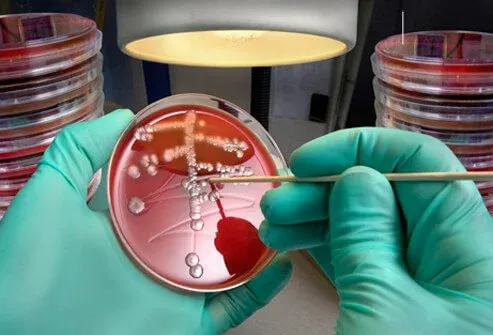
What are Bacteria?
Bacteria are microscopic, single-cell organisms that live almost everywhere. Bacteria live in every climate and location on earth. Some are airborne while others live in water or soil. Bacteria live on and inside plants, animals, and people. The word "bacteria" has a negative connotation, but bacteria actually perform many vital functions for organisms and in the environment. For example, plants need bacteria in the soil in order to grow.
The vast majority of bacteria are harmless to people and some strains are even beneficial. In the human gastrointestinal tract, good bacteria aid in digestion and produce vitamins. They also help with immunity, making the body less hospitable to bad bacteria and other harmful pathogens. When considering all the strains of bacteria that exist, relatively few are capable of making people sick
[12/16, 11:39 PM] Wizzybrown: What Is a Bacterial Infection?
A bacterial infection is a proliferation of a harmful strain of bacteria on or inside the body. Bacteria can infect any area of the body. Pneumonia, meningitis, and food poisoning are just a few illnesses that may be caused by harmful bacteria. Bacteria come in three basic shapes: rod-shaped (bacilli), spherical (cocci), or helical (spirilla). Bacteria may also be classified as gram-positive or gram-negative. Gram-positive bacteria have a thick cell wall while gram-negative bacteria do not. Gram staining, bacterial culture with antibiotic sensitivity determination, and other tests like genetic analysis are used to identify bacterial strains and help determine the appropriate course of treatment.
.webp)
Bacterial Skin Infections
Bacterial skin infections are usually caused by gram-positive strains of Staphylococcus and Streptococcus or other organisms. Common bacterial skin infections include:
Cellulitis causes a painful, red infection that is usually warm to the touch. Cellulitis occurs most often on the legs, but it can appear anywhere on the body.
Folliculitis is an infection of the hair follicles that causes red, swollen bumps that look like pimples. Improperly treated pools or hot tubs can harbor bacteria that cause folliculitis.
Impetigo causes oozing sores, usually in preschool-aged children. The bullous form of impetigo causes large blisters while the non-bullous form has a yellow, crusted appearance